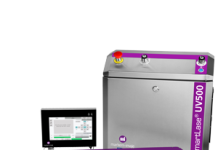According to Sander Sondaal, Director Commercial Print Sales, Graphic Communications Group, Ricoh Europe, digital inkjet enables commercial printers to transition from short run offset competitively and responsively.
It is transforming the production of hyper relevant short runs for a wide range of applications with its ability to deliver exceptional image quality on a wide range of media at high speed. These benefits are clear but what are the next steps to evolving your operation?
Here are five top tips to getting investment in digital inkjet right:
1. Identify the opportunities
The projected growth for inkjet signposts an attractive market underpinning confidence in the ability to win work. Market research consulting firm Mordor Intelligence’s Inkjet Printing Market – Growth, Trends, Covid-19 Impact, and Forecasts (2021 – 2026) report expected the global inkjet printing market to reach E41.36 billion by 2026. This growth is achievable because the flexibility and versatility of inkjet enables commercial printers to respond to clients’ demand for smaller, hyper personalised runs on a broader variety of stock. Its high quality capability makes results practically imperceptible from offset print, aiding the transition of jobs to a cost effective technology that supports variable content.
2. Adopt the right technology
Choose a print production system that can handle your current workload while also being flexible enough to adapt to future demands, like one that introduces efficiencies and automates the maximum number of processes to be able to give a quick response with the minimum intervention. Consider a software solution that manages customer communication upstream and production downstream.
3. Adapt the business successfully
Investing in inkjet allows you to expand your portfolio and add new applications that use the combination of high quality variable print on a range of substrates. It helps differentiate with the delivery of premium applications including targeted mail, transpromotional, magazines and catalogues. It expands your ability to deliver value added services by adding marketing services, cross media and fulfilment. You can also develop your online presence for order capture and increased sales capacity.
4. Educate staff and clients on the new possibilities
Getting staff buy-in makes any investment or process change more successful. Let your staff know why the change is important and how they will benefit. Clearly state the reasons behind the change and listen to what they have to say. Help them improve their skills with expert training, coaching and mentoring and enhance the business’s talent pool by investing in qualified staff. Their collective enthusiasm and passion for the business will become your biggest business winning asset.
5. Drive growth
Assess your route to sales. In many mid-sized companies, the managing director or owner is the main sales person with heavy reliance on maintaining existing relationships rather than establishing new ones. Are you one of them?
Once you have considered these points and committed to change, explore the possible solutions with a partner that will support your operational evolution.





















